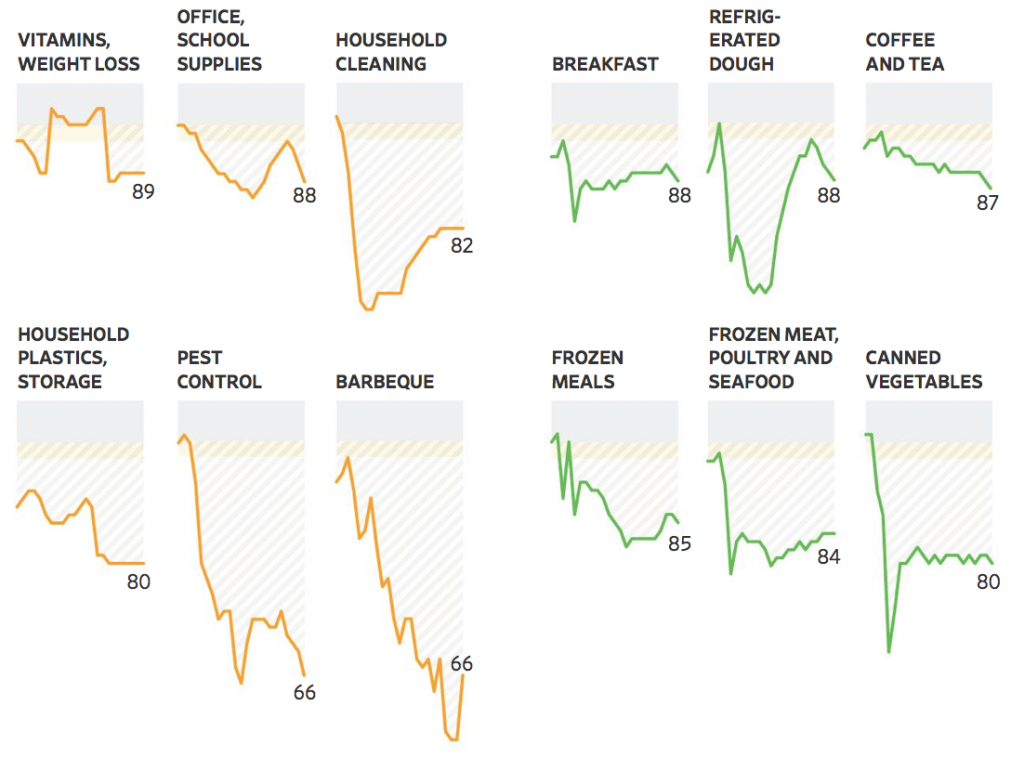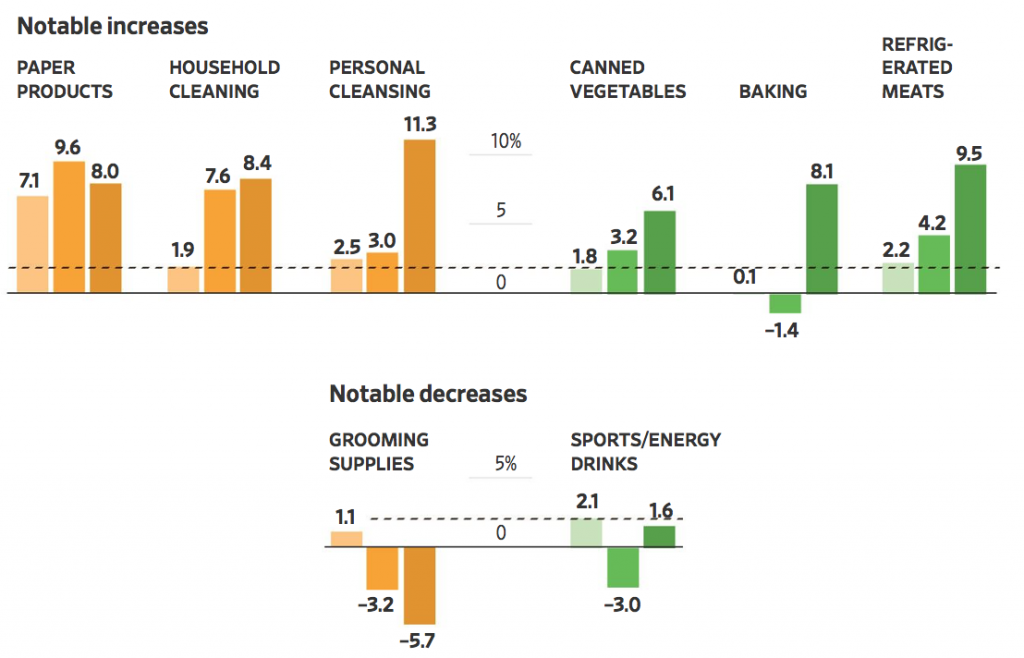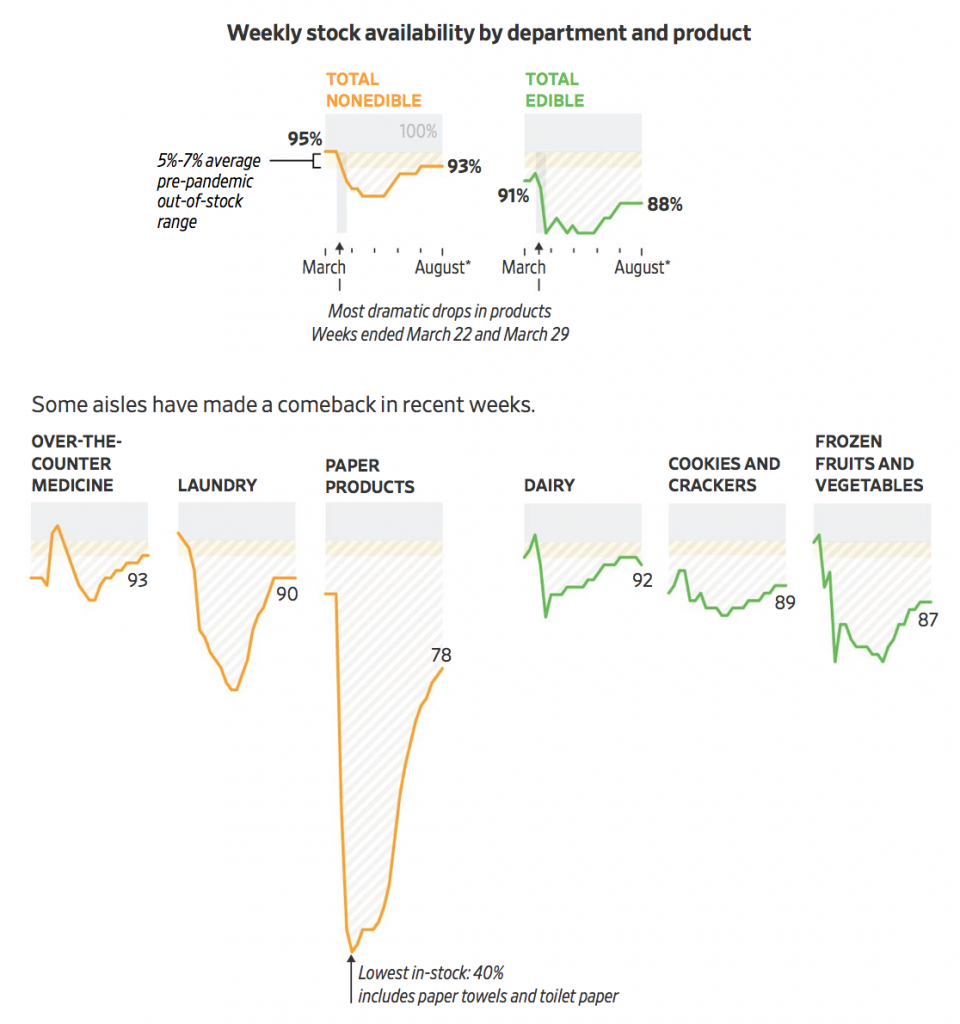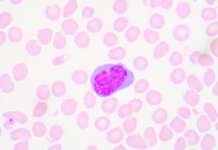The Wall Street Journal has a terrific article on the current state of consumer supplies. The short version, as many of you have been reporting, is many things that were scarce no longer are, like toilet paper and chicken breasts. Not being a baker or much of a cook and also due to still avoiding doing anything in stores other than very focused shopping runs, I can’t comment personally about other items that got cleaned out due to Covid-19 stockpiling, such as flour and pasta. However, I have yet to see isopropyl alcohol or disinfectant wipes return to area drugstores.
USA Today confirms my impression: Clorox wipes are likely to be scarce through 2021. However, more and more research suggests that the surface cleaning is overdone. Handwashing plus masks masks are the best protective measure, followed by the addition of face shields or goggles. By contrast, all those disinfectants do kill germs, but viruses are a different story The research tends to overhype normal cleaning routines (spraying and wiping), when short-term contact with a disinfectant won’t do in Covid-19. From UC Health:
Soap and water can clean household surfaces – as long as you really scrub. Think about mashing coronavirus to oblivion – which it richly deserves – as you do.
A simple mix of bleach and cold water also works for disinfecting coronavirus: four teaspoons of bleach per quart of water – or, for larger loads, five tablespoons (1/3rd cup) per gallon. With standard Clorox or similar, a five-minute period exposed to those mixtures should kill coronavirus, according to the U.S. Environmental Protection Agency. Given bleach’s harshness on stainless steel and countertops, wipe surfaces down with water after those five minutes. A plastic toy or metal item can be immersed in bleach for 30 seconds to disinfect. Two important caveats: 1) wear gloves, and 2) don’t mix bleach with ammonia as the combination is toxic. Bleach solution should be used within 24 hours as it loses effectiveness with time.
Isopropyl alcohol or rubbing alcohol with at least 70 percent alcohol – undiluted – will kill coronavirus on surfaces in about 30 seconds.
A straight 3% hydrogen peroxide solution takes out rhinovirus – which is tougher to kill than coronavirus – in six to eight minutes, and so should be at least as quick in disinfecting coronavirus.
Did you pay attention? I can virtually guarantee that this is not what most germophobes are doing. Scrubbing with soap is effective but all those American commercials push buying sprays and just applying and wiping. In fact, if you are going to spray something, it needs to be nasty and it needs to sit. I can tell you simply from using isopropyl alcohol, which seldom has warnings about its use, produces fumes and if you breathe them, you get an irritated trachea. That can easily lead to “Do I have Covid-19” worries; I know I reacted that way for quite a while. Bleach is even nastier and regularly gets warnings against breathing fumes. Letting it sit for five minutes is guaranteed to generate fumes.
So IPA alcohol is fastest, yet you still need to let it sit 30 seconds. You are better off moving away and coming back to wipe it off, or just letting it evaporate. And with IPA, 60-70% strength is what you need. Higher concentrations evaporates too quickly to kill the virus. So if you have >70%, dilute it down to the effective concentration.
Given the state of Covid-19 here in the South, we have started judiciously building up our inventories again. Even though our infection rate in Alabama is now slightly less terrible than it was a few weeks ago, that does not seem to be much reason for cheer. Some public schools and colleges are opening. Even though masks are now required in places of business (hooray!), I still see too many people wearing them below their noses or even pulling them down to talk. And since respiratory infection rates are destined to get worse in the winter, due to the drier air being more virus-friendly, some preparation would seem to be in order.
According to the Journal, we’re not the only ones thinking this way:
As Covid-19 cases continue to rise in certain states, grocers are reporting a new increase in staples purchases that could lead to scarcity. The even-stronger demand for items such as baking ingredients and paper towels has made it tough for manufacturers to produce the items fast enough to keep shelves full.
Stores are better supplied than during the lockdown crunch, but not back to the old normal:
During the peak shopping spree at the end of March, stores ran out of 13% of their items on average. Now, roughly 10% of items remain out of stock, compared with a normal range of 5% to 7% before the pandemic.
That might not seem significant, but leaving shelves 90% full for half a year would cost the supermarket industry some $10 billion in lost revenue, according to research from trade associations.
For grocery shoppers, it means that someone with 20 items on their list would be out of luck on two of them. Shopper surveys have shown that if people can’t find what they are looking for, they will try a different store, and the retailer risks losing that customer for good.
The Journal also showed types of items still in spotty supply:

And as consumers no doubt recall from the way meat prices spiked during the worst of the crunch, supply isn’t the full story. High prices also serve to create a bit of rationing, since budget-crunched customers will buy less or switch to substitutes. Again from the Journal:

Those of you who garden, can and pickle are ahead of the game. The rest of us are at the mercy of our suppliers. Wish us luck.



















